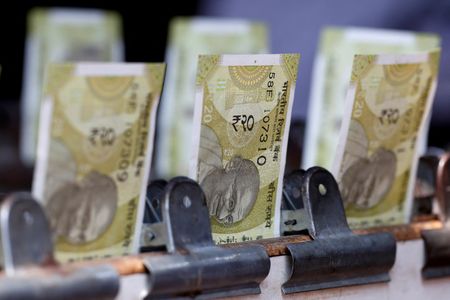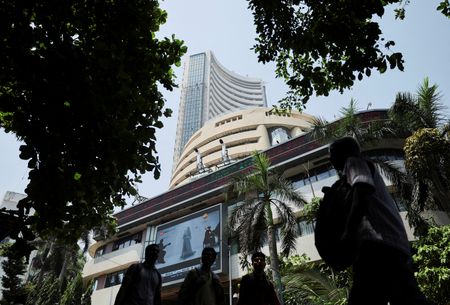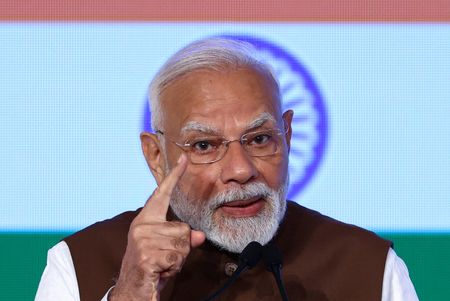By Jaspreet Kalra
MUMBAI (Reuters) – The Indian rupee hit an all-time low and remained consistently under pressure this week, hurt by worries over how U.S. tariffs and changes in immigration policy could dent trade, remittance and foreign portfolio flows into India.
The rupee closed at 88.7175 against the U.S. dollar on Friday, little changed on the day but down 0.7% on the week, its steepest weekly fall since late August.
At the beginning of the week, the rupee was troubled by a sharp hike in U.S. visa H1-B fees which could dent long-standing business models of local IT firms. A fresh tariff salvo from the White House – 100% levy on branded and patented drugs – towards the end of the week sparked headwinds as well.
India’s benchmark equity indexes, the BSE Sensex and Nifty 50 ended the week lower by 2.5% each, their steepest drop since late-March.
Market interventions by the Reserve Bank of India helped shield the rupee from steeper losses this week even as it hit an all-time low of 88.7975 earlier on Tuesday.
Traders and analysts reckon that the RBI may be open to allowing the rupee to weaken gradually but is unlikely to let volatility rise sharply.
“The RBI’s tolerance for a weaker INR does not mean the central bank is absent from the FX market. It has been selling FX reserves, but largely to contain market volatility,” analysts at ANZ said in a note.
A weaker spot INR coupled with low domestic inflation mean the currency’s competitiveness has improved, which can mitigate the impact of higher tariffs to a limited extent, the note said.
India’s central bank will release data on the country’s foreign exchange reserves on Friday, which were last at nearly $703 billion as of September 12 – in touching distance of their all-time peak.
Elsewhere, the focus is on U.S. personal consumption expenditure (PCE) data due later in the day for cues on the future path of U.S. policy rates. The dollar index was last steady at 98.4.
(Reporting by Jaspreet Kalra; Editing by Janane Venkatraman)











